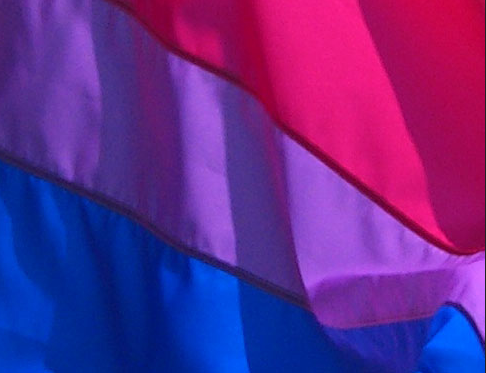Bisexuality Is More Common Than In Past Years, According To CDC Survey

There are more bisexual men and women than has been reported in the past, according to the latest national survey from the Centers for Disease Control and Prevention (CDC). Five and a half percent of women and 2 percent of men report being bisexual in comparison to the 3.9 percent and 1.2 percent in the last survey, respectively.
The survey involved over 9,000 males and females aged 18 to 44, whose answers were collected from 2011 to 2013. They were interviewed by way of computer, through a method called audio computer-assisted self-interviewing (ASCASI). The study authors say this was done to gain more accurate and honest answers from participants.
"In ACASI, the respondent listens to the questions through headphones, reads them on the screen, or both, and enters the response directly into the computer," the study reads. "This method avoids asking the respondent to give his or her answers to the interviewer, and it has been found to yield more complete reporting of sensitive behaviors."
Debby Herbenick, associate professor at Indiana University and author of the book Sex Made Easy, told CNN that awareness about bisexuality has been growing in recent years, and it could simply be easier for people to label themselves that way.
"It's certainly not a new idea that women and men may be attracted to more than gender," she said. "But that doesn't mean it's an easy orientation to adopt. [Bisexual women] and men [...] experience stigma not just from heterosexuals but also homosexuals."
The study found more women reported having sexual contact with other women (17.4 percent) than in the prior survey (14.2 percent), but that the percentage of men and women who identified as homosexual stayed pretty consistent at 1.3 percent for women and 1.9 percent for men. Also consistent with previous studies was the fact more women than men reported being bisexual. Women were also more likely than males to report same-sex sexual contact — 17.4 percent of women say they've had sexual contact with another woman, compared with just 6.2 percent of men reporting same-sex contact.
With regards to heterosexuality, 95.1 percent of men and 92.3 percent of women identified with the label. The study notes that "sexual attraction and sexual orientation correlate closely, but not completely, with reports of sexual behavior."
The understanding of sexual behavior in populations can assist healthcare professionals and programs reach and assist at-risk populations, according to Herbenick.
"There are real effects when you find out what people are doing sexually that can translate into safer sex, sex education, (and) informing doctors and nurses (about) what people are doing so they can talk with them in more informed and compassionate ways," she said.
Source: Copen CE, Chandra A, Febo-Vazquez I. Sexual Behavior, Sexual Attraction, and Sexual Orientation Among Adults Aged 18-44 in the United States: Data from the 2011-2013 National Survey of Family Growth. National Health Statistics Reports. 2016.



























